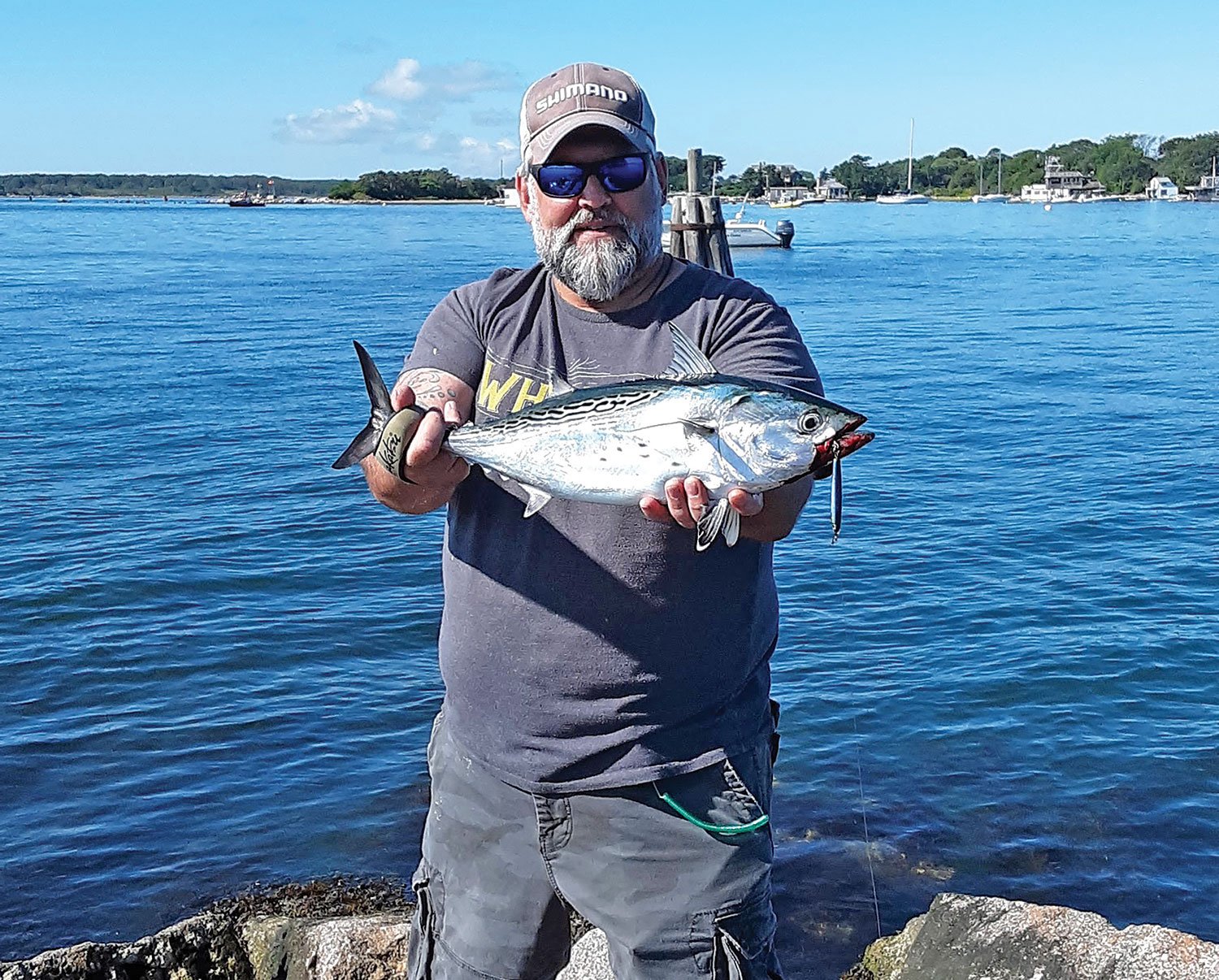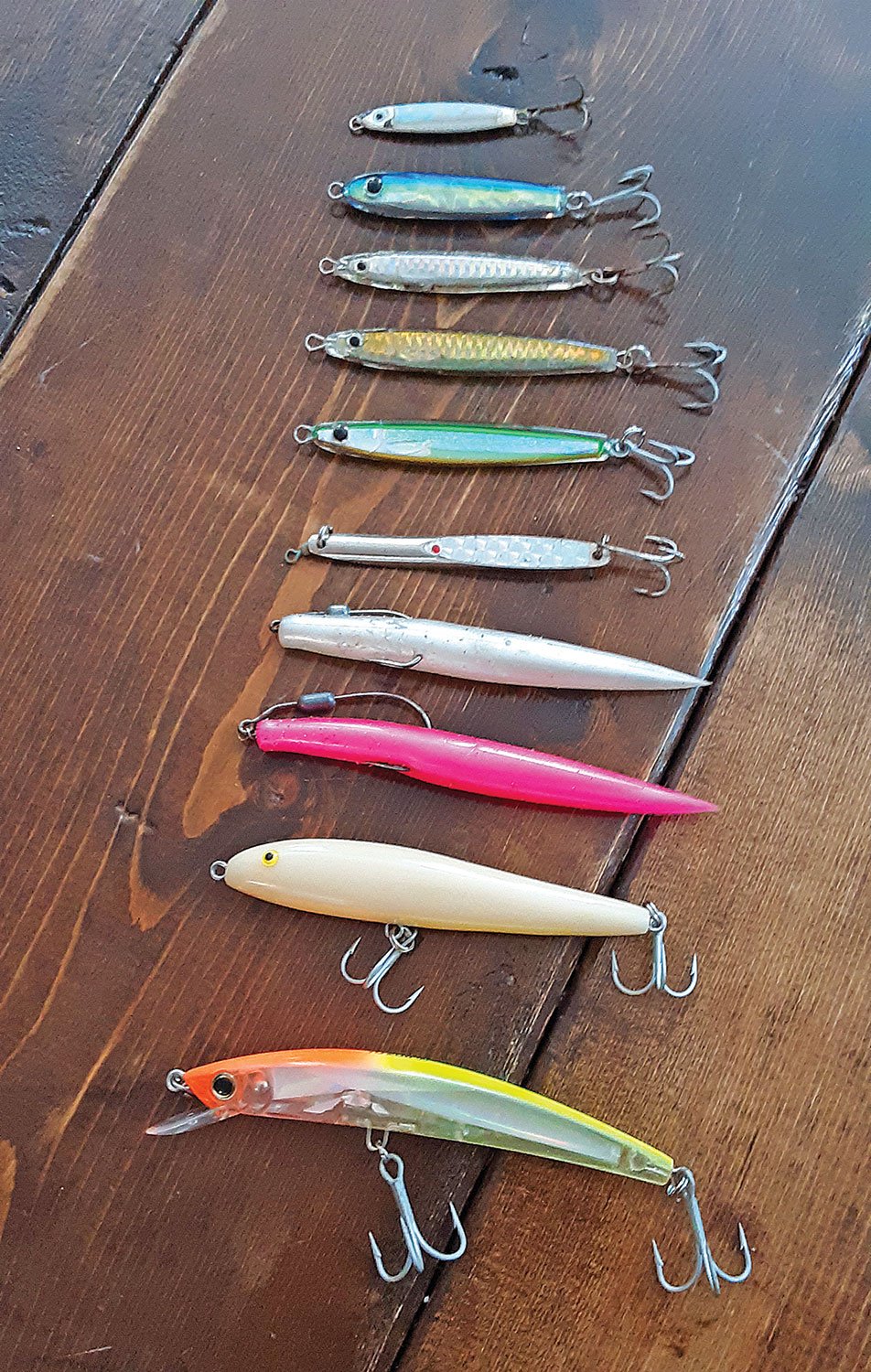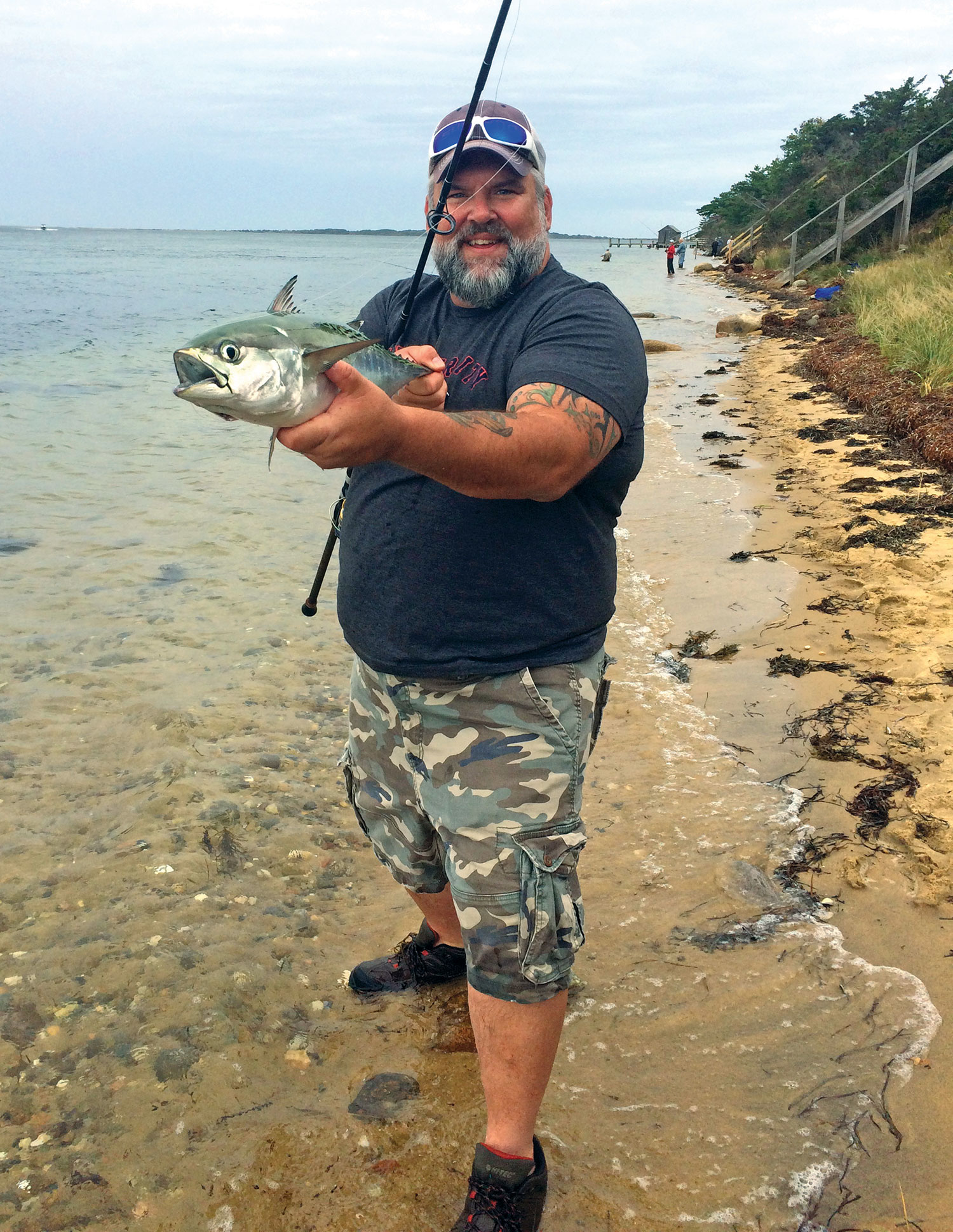
Fireworks, backyard barbecues, suntan lotion, the sound of bottles clinking in an ice-filled cooler; oh yes, it must be summer. From the moment the bell rings on the last day of school, to the first hint of fall as you spot a leaf turning red, the shoreline is dotted with beach-goers soaking up vitamin D. The Jersey Shore, Long Island, Massachusetts, Maine, and everywhere in-between, little kids with sand in their shorts, and big kids with boat drinks, all taking in the all-to-short days of sunshine and southwesterly winds. The sun and salt also draw the fishermen and women to the sea. However, there are those of us that soon feel a growing obsession as the dog days of summer take hold. While not wanting to lose the warmth of the season and all that goes with it, these particular anglers know that the end of summer brings a new season and a reward for those of us who have been patiently waiting for the first slice of silver through the waves. This is the time to gear up for albies.
Chasing false albacore, or “albies” as the fanatics refer to them, from terra firma is all about lightweight action. It’s about having a surf rod that can toss lures and soft plastics from as light as 1/4 ounce to perhaps as heavy as 1.5 ounces or more. This is the time to stow away the big heavers and heavy surf outfits suited for big plugs. For me, the sweet spot is a rod that can toss a 3/4- to 1-ounce lure a country mile. A medium to medium light rod with a soft tip for that necessary spring to hurl a lure quickly into the action can reward you with that silver bullet you’ve been chasing all day. When that one swirl from the corner of your eye is the only sign, you need to react quickly and accurately. Even then, the speedsters may be yards from the fading ripples before the lure hits the water, but any advantage you can give yourself ups your odds of a hookup. Regarding length of rod, the general consensus is around 8 feet, give or take a foot.

Years ago, I fell into the “general” category until the albie obsession evolved with experience, and eventually it became quite clear that if you target albies regularly, multiple outfits of different lengths, for different locations and applications, will increase your odds of success. Today I have many light setups from 8 to 10 feet in length. If you’re jetty hoping, chasing fish from inlet to inlet, then an 8-foot setup is just about perfect. However, if you frequent the beaches searching for little tunny, there will be times when the extra distance allotted from a 10-footer might be exactly what you need. Of course, there will be days when you are working the beach and the fish are running right on the surf line, but as they say, it’s better to be over-prepared. And speaking of being over-prepared, if you are serious about chasing albies from shore, having at least two rods is a must because there is a good chance the day will come when that one rod will snap due to the lightweight nature of the fishery and the blazing power of the false albacore. I’ve come to wrap a slight bit of electrical tape around the ferrule to add just a bit more strength. Of course if you’re fishing a one piece, that eliminates the risk. However, paying for a high end one-piece is not a necessity. There are perfect stock options available to anglers ranging from Tsunami’s 10-foot light Trophy surf rods, to 8-foot St. Croix specials.
Just as important as the right rod is the right reel. My albie outfits all consist of one of the aforementioned rods combined with a 4000 or 5000 class reel, and if there is one place you want to spend your money when hunting albies then the reel is it. You don’t necessarily need to go super-high end, but you do want a quality reel with an exceptionally smooth drag. While our northeast albies typically range anywhere from 5 to 10 pounds, the possibility of fish in the mid-teens exists; but even fish on the smaller side will strip line from your reel at light speed. Last year, while prospecting some of my usual early fall spots, I happened upon a pack of albies that had me palming the spool of my Shimano Stradic 4000 with the fish melting through my 20-pound braid. The outing ended with me thanking the fish gods for a smooth and powerful drag after going 4 for 6 on some of the largest shore fish I’ve encountered including my personal best with a fish over 13 pounds. Considering line, my normal outfits are loaded with 20-pound quality braid topped with a 40-inch, 15-pound fluorocarbon leader. This year I’ll be traveling with one additional outfit running 15-pound braid and 10-pound fluorocarbon leader for those extra-finicky fish you encounter occasionally.
Regarding connecting leader to main line, you can tie line to line with a variety of knots; but I’ve found using a small, quality barrel swivel has no affect and is not a deterrent to the fish. On the business end I used to be firm believer in tying direct to my lure; however, last year I experimented with size 4 Spro split snaps and caught numerous fish. The benefit here is saving your fluorocarbon leader material since there is no need to be constantly cutting and retying.
Now, what to put on the business end of the leader? Well, that is a matter of personal preference and confidence. However, if I were to compile a bag for you, it would most definitely include the following for your best chance at catching a false albacore from the shore. Tins and jigs start the list off. This includes Deadly Dick and epoxy-type jigs, and other tins that replicate smaller bait like peanut bunker. That is a key: having a variety to replicate the local baitfish from silversides and bay anchovies to peanuts. Late summer into autumn sees loads of bait pouring from the bays and inlets, clouding the waters in places, and imitation is the key to success. Go-to lures for many anglers are Hogy epoxies from 5/8 to 7/8, and up to 1.25 ounces. Deadly Dicks in similar sizes will produce as well; but don’t limit yourself to these better-known options. There are many products on the market that will get you tight to these speedsters, so don’t hesitate to experiment. Colors can range from silver to you-pick-it to naturals, and it’s worth having a variety of options.
Next up is soft plastics, including the appropriately-named “Albie Snax.” The trend towards small plastics has been growing in recent years, and I can confirm they absolutely get you hooked up! In addition to the Snax, you may want to include jig heads from 1/4 to 3/4 ounces and weighted swimbait hooks with plastics anywhere from 3 to 6 inches. Zoom flukes, Fin-S Fish, and original Hogy plastics are just a few of many available to you.

I would also consider adding small topwaters such as a Zara Spook or small cup-faced poppers for when the bite is really on, and the water is frothing right before your eyes. A topwater bite, as with all fish, undoubtedly gets the heart racing like no other. Lastly, small swimmers to 5 inches like Yo-Zuri’s crystal minnows can not only fool a feisty albie, but may also find purchase in the jaw of some of our other pelagic visitors like bonito and Spanish mackerel.
As for what type of tackle box or surf bag you’ll hit the rocks or sand with, well the name of the game is “go-light.” I like a small surf bag, typical of those 4-tubed bags you see mobile striper/bluesmen toting when on the move. However, I make some modifications. I remove all but one tube for swimmers and poppers, and in place of the other three I add a clear Plano storage box with length-wise separators to accommodate some epoxy jigs and jig heads. A bag of a few soft plastics finds its way in the pouch with terminal tackle and a small leader spool. The rest of the gear stays in the truck, to be swapped out when desired.
With albie season usually starting sometime in late August but really picking by early September, we’re talking about the warmest water of the year so typically you’ll be going light as far as waders are concerned. However, if your plan for the outing consists of bouncing from beachfront to jetties and rocks, you’ll want to cover your bases. Wet wading at this time is still an option, but while you don’t necessarily need to wade too far, you may want to pack breathable waders. When I encounter albies on the beach, they’ll eventually run the shoreline chasing bait so the preference is up to you. I typically let the temperature guide me in this decision.
Rocks and jetties are a different story. Some locations may be nice and dry, free of green and black slime, which allows for an old pair of sneakers. But more often than not you’ll want cleats or felt-soled wading boots to secure your footing for a safe outing. The rule here is safety first, and cover your footing options, as you may be hopping from one type to another.
And that leads me to my final point – a decent map. While your Waze or Google maps may have you covered while in transit, I find planning ahead, and even having a map book in my vehicle can reveal many opportunities for hunting albies from shore. If I’m planning on a full day of chasing silver, I review my map and have multiple locations checked off to hit at certain times. This will certainly up your chances for success.




